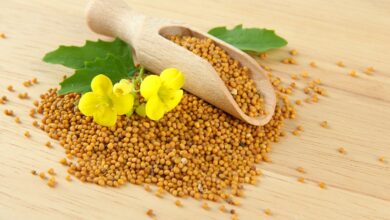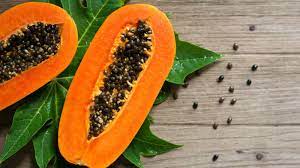
Mustard seed is a flexible and productive yield that can be developed by proficient farmers hoping to differentiate their rural endeavors. With the right information and strategies, mustard seed development can yield excellent seeds that are popular in different businesses. In this blog entry, we will investigate the fundamental stages and methodologies for mastering mustard seed developing strategies for proficient farmers.
Understanding Mustard Seed Assortments
- Digging into the domain of mustard seed development requires a primary information on the unmistakable assortments that exist, as each sort brings its own arrangement of qualities, benefits, and market inclinations.
- The essential assortments of mustard seeds perceived around the world incorporate yellow mustard (Sinapis alba), earthy colored mustard (Brassica juncea), and dark mustard (Brassica nigra). These assortments are separated by their variety as well as by their flavor profiles, development propensities, and climatic versatility, pursuing the decision of assortment a basic choice for proficient farmers planning to satisfy explicit market needs.
- Yellow mustard, known for its gentle flavor and splendid variety, is many times the assortment of decision for sauces and culinary applications in Western cuisities. Its seeds are bigger and its plants are more impervious to cold, making it a reasonable choice for farmers in cooler environments. Earthy colored mustard, with its more sharp flavor, is habitually utilized in Indian cooking and different European dishes.
Choosing the right Mustard Seed Assortment
- This assortment can adjust to a more extensive scope of soil types and frequently develops quicker than yellow mustard, offering possible advantages as far as harvest pivot and yield timing. Dark mustard, the most sharp of the three, is esteemed in specialty markets and certain ethnic cooking styles. Its seeds are more modest and the plants are more vulnerable to cold, requiring more unambiguous developing circumstances to flourish.
- For proficient farmers, choosing the right mustard seed assortment includes considering not just the climatic circumstances and soil sorts of their cultivating areas yet additionally the market patterns and buyer inclinations in the locales they serve. Drawing in with nearby rural expansion administrations and market experts can give important experiences into which mustard assortments are popular and can bring premium costs.
- Moreover, trying different things with limited scope plantings of various assortments can assist farmers with checking the exhibition of each sort in their extraordinary developing circumstances prior to focusing for bigger scope development.
Understanding the subtleties of mustard seed assortments is the most vital phase in mastering mustard seed development. By choosing the suitable assortment, proficient farmers can upgrade their harvest’s quality, yield, and attractiveness, making ready for an effective and beneficial mustard seed creation adventure.
Ideal Soil Groundwork for Mustard Seeds
- Establishing the ideal soil climate is pivotal for the effective development of mustard seeds. These plants favor a dirt pH going from 6.0 to 7.5, featuring the significance of leading exhaustive soil tests before planting. Such tests uncover the pH level as well as the current supplement profile, which can direct farmers in making the important soil alterations to meet the particular necessities of mustard crops.
- Integrating natural matter into the dirt stands apart as a critical procedure for upgrading its construction and fruitfulness. Fertilizer, all around spoiled compost, or green excrement yields can be transformed into the dirt prior to planting to help its natural substance. This further develops seepage and air circulation as well as builds the dirt’s capacity to hold dampness and supplements, the two of which are essential for the sound development of mustard plants.
Supplement Needs is one more Crucial Stage
Tending to the dirt’s supplement needs is one more crucial stage in soil arrangement. In view of the aftereffects of soil tests, proficient farmers might have to apply adjusted manures to guarantee a satisfactory stockpile of fundamental supplements. Nitrogen, phosphorus, and potassium are especially significant for mustard crops, as they support leaf improvement, root development, and generally speaking plant wellbeing. Be that as it may, it’s essential to keep away from over-preparation, particularly with nitrogen, as this can prompt lavish foliage to the detriment of seed creation.
The actual arrangement of the dirt can’t be ignored. Mustard seeds require a fine seedbed for ideal germination. Farmers ought to work the dirt to a fine tilth, separating enormous lumps and eliminating stones and garbage that could hinder seedling development. Assuming the dirt is inclined to crusting, gently raking the surface in the wake of planting can assist with guaranteeing that arising seedlings are not caught underneath a hard soil covering.
At long last, tending to potential seepage issues is fundamental for mustard seed development. Mustard plants don’t charge well in waterlogged circumstances, so it is basic to guarantee great seepage. In regions with weighty earth soils or unfortunate seepage, making raised beds or consolidating sand or other coarse materials can further develop soil waste and forestall root decay.
By zeroing in on these parts of soil planning, proficient farmers can establish a favorable climate for mustard seeds to develop, develop, and at last yield a plentiful collect.
The Ideal Establishing Methodology
Creating an ideal methodology for establishing mustard seeds is essential for guaranteeing a fruitful gather. Key to this technique is exact timing and separating, which are key for augmenting development and yield. Proficient farmers ought to expect to plant mustard seeds when the dirt is functional and has warmed to something like 40°F, which is normally in late-winter or on the other hand, in pre-fall to keep away from the pressure of outrageous temperatures on the plants.
The establishing system itself requests meticulousness.
- Seeds ought to be planted at a shallow profundity of roughly 1/4 inch underneath the dirt surface. This shallow establishing assists in guaranteeing that the seeds with having sufficient contact with the dirt, working with better germination rates. Similarly significant is the dispersing among lines and inside columns. Mustard plants prosper when they have sufficient space to develop without rivalry. Hence, lines ought to be separated around 12 to 24 inches separated, contingent upon the assortment and the cultivating gear being utilized.
Early Seedling Development
- To support uniform germination and early seedling development, it’s useful to water the dirt softly following planting. This underlying dampness is pivotal for actuating the germination interaction. Notwithstanding, farmers should be cautious to stay away from overwatering, as standing water can prompt seed decay and adversely influence germination rates.
- For bigger scope creations, accuracy cultivating gear can be used to guarantee steady seed profundity and separating. Such instruments upgrade proficiency as well as add to a more uniform yield stand, which is favorable during both development and collect stages.
- Checking soil temperature and dampness levels when planting is likewise fundamental. These natural elements assume a huge part in the outcome of mustard seed germination and early seedling improvement. By taking on these essential establishing rehearses, proficient farmers can make way for vigorous development, ideal wellbeing, and high return mustard crops, in this way amplifying their rural efficiency and benefit.
Watering and Preparation Insider facts
- Streamlining the watering and treatment routine for mustard seed crops is a basic part of effective cultivating rehearses, straightforwardly impacting the wellbeing, development, and yield of the plants. Authority of these angles can separate proficient farmers, guaranteeing that their mustard crops flourish under ideal circumstances.
- For watering, keeping a balance is fundamental. Mustard seeds and youthful plants need reliable dampness to work with germination and early development stages, however over-watering should be fastidiously stayed away from to forestall root decay and other water-related issues. During the germination stage, light and successive watering ought to be rehearsed to keep the dirt equitably sodden. As plants mature, decreasing the recurrence however expanding the profundity of watering supports further root improvement, upgrading the plants’ dry spell resistance. It’s additionally critical to change watering rehearses in light of weather patterns, soil type, and plant development stage, with specific consideration during the blooming stage when water request tops.
Mustard Crops Permits Proficient Farmers
- Preparation rehearses should be directed by the particular healthful necessities of mustard plants and the dirt’s current, still up in the air by extensive soil testing. Nitrogen (N) is essential for sound vegetative development, however its application should be adjusted to forestall over the top foliage to the detriment of seed creation. Phosphorus (P) is significant for strong root advancement and blooming, while potassium (K) upholds by and large plant wellbeing and illness opposition. A reasonable manure, frequently in the detailing of N-P-K (like 10-10-10), applied at planting and conceivably again during the mid-development stage, can give the important supplements on the off chance that dirt tests show a lack.
- The way to compelling treatment lies in accuracy and balance. Over-treatment can prompt supplement spillover, ecological contamination, and even harm to the mustard plants themselves. Using slow-discharge manures and natural corrections like fertilizer can assist with giving a consistent stock of supplements to the plants, advancing practical development over the long haul.
Integrating these watering and treatment mysteries into the administration of mustard crops permits proficient farmers to improve plant wellbeing and augment yields, guaranteeing the benefit and supportability of their horticultural activities.
Overseeing Vermin and Sicknesses in Mustard Yields
Chasing after mastering mustard seed development, proficient farmers should likewise foster a capable way to deal with overseeing nuisances and illnesses, as these difficulties can essentially influence crop wellbeing and yield. Mustard crops, in the same way as other others, can fall p



